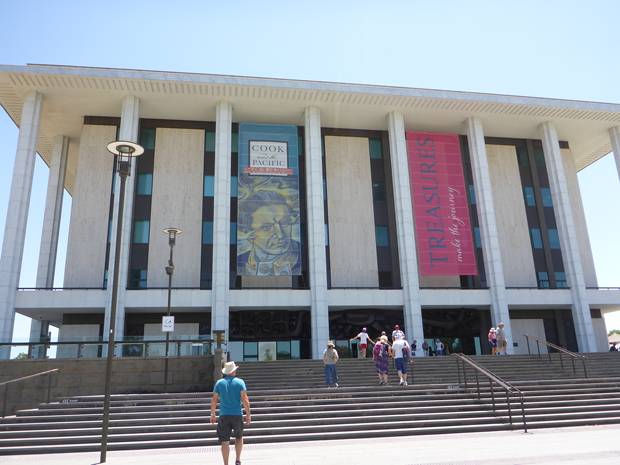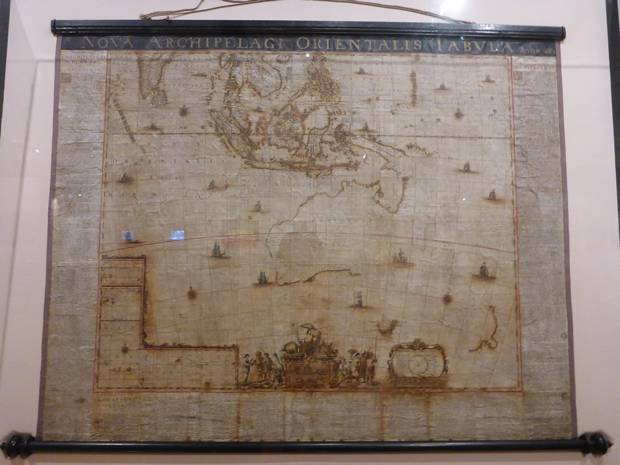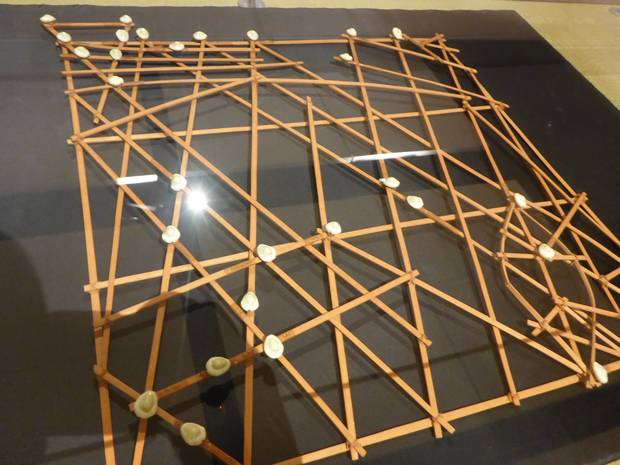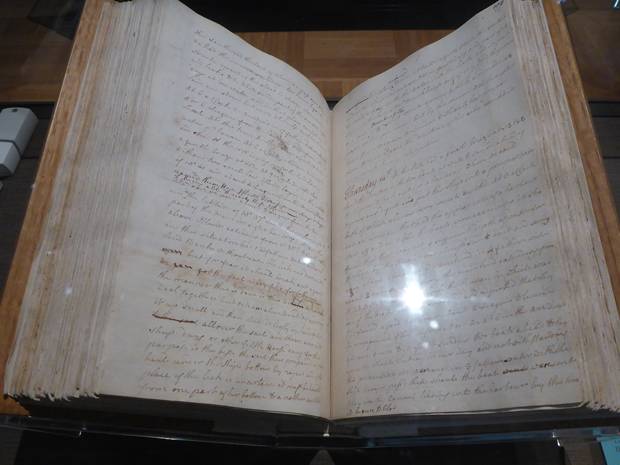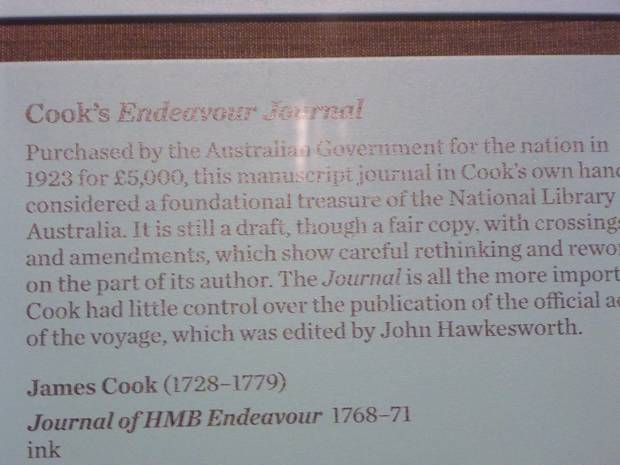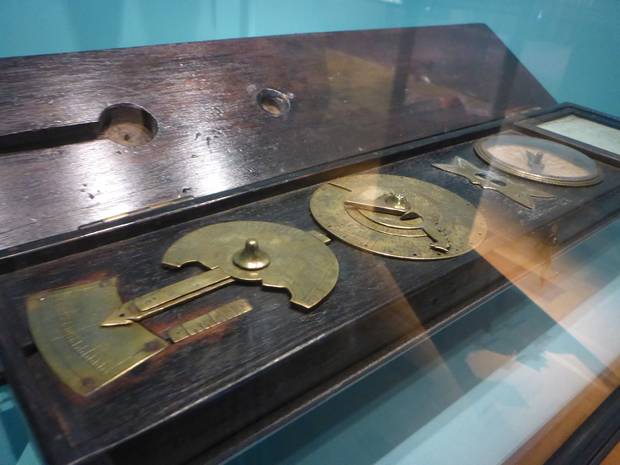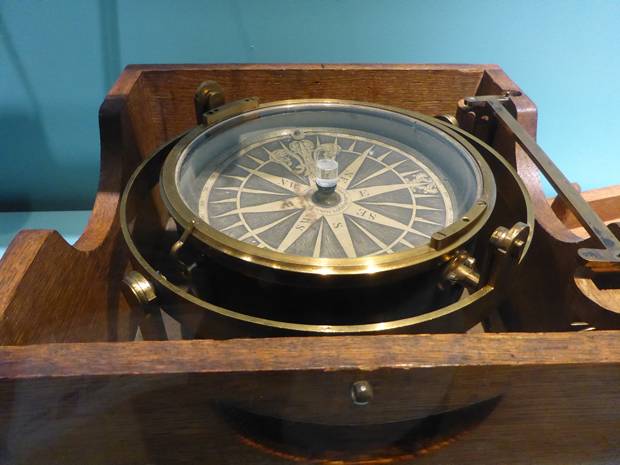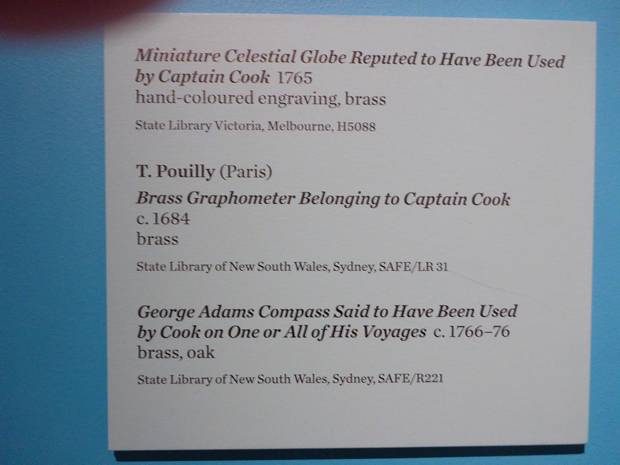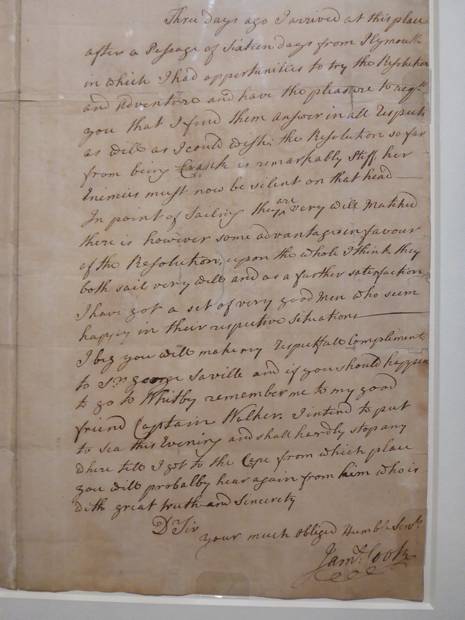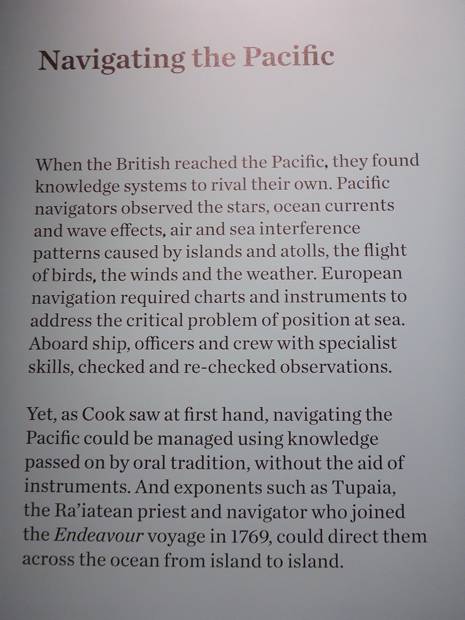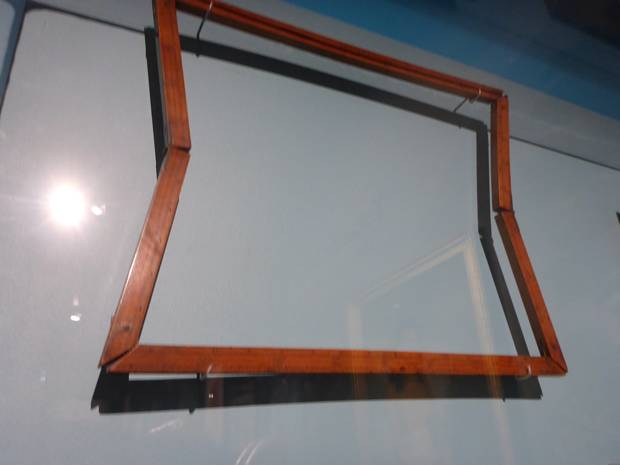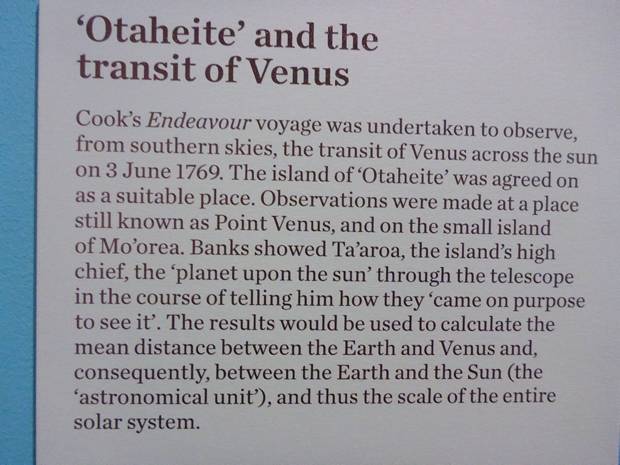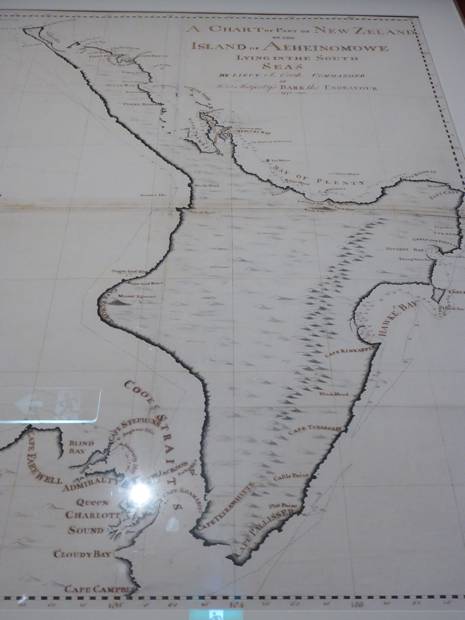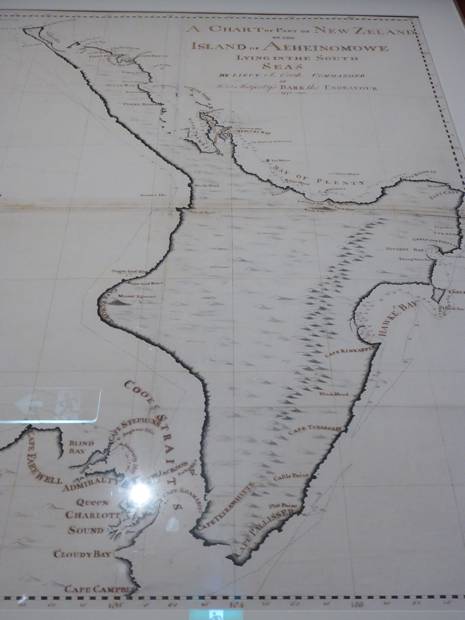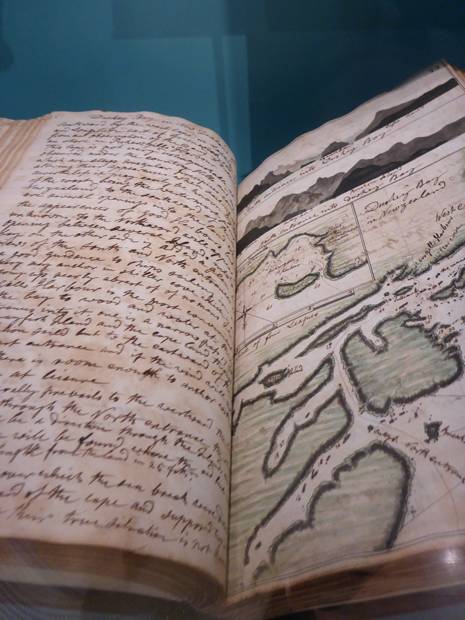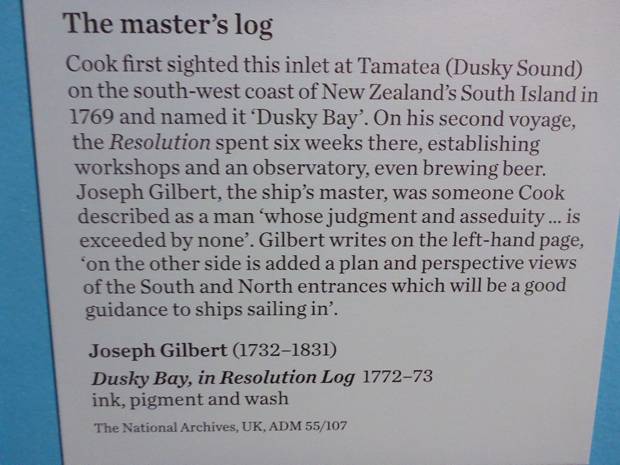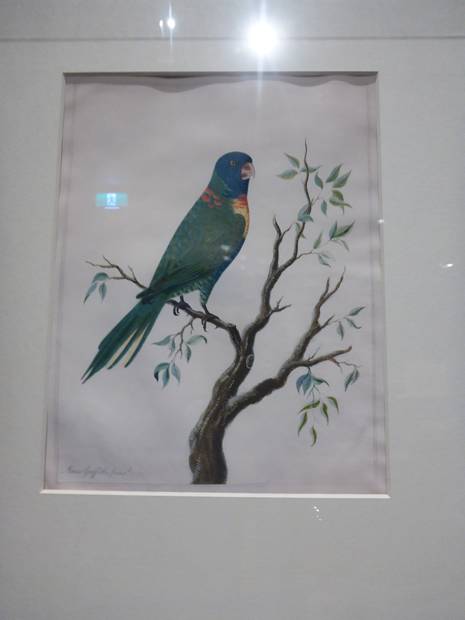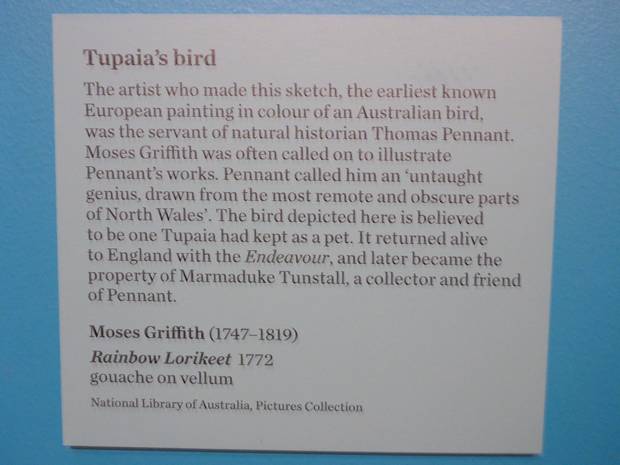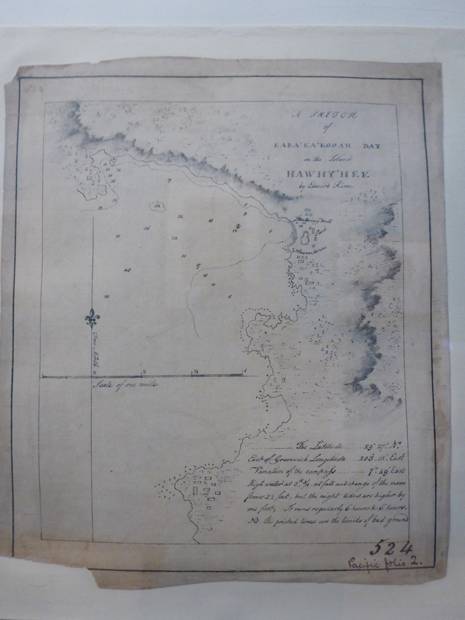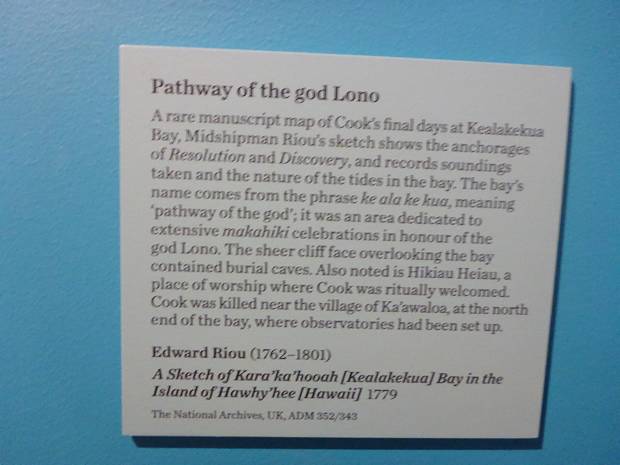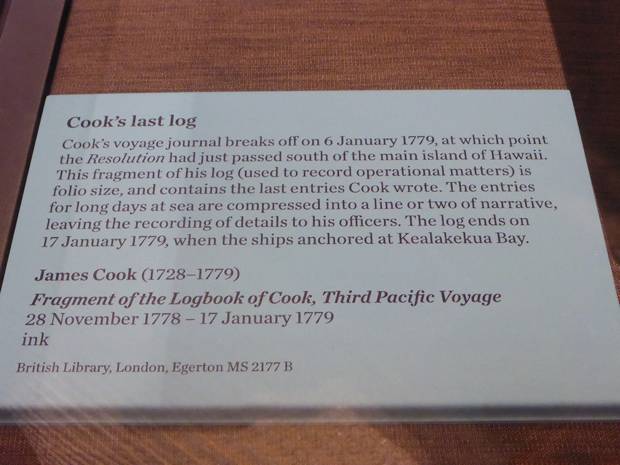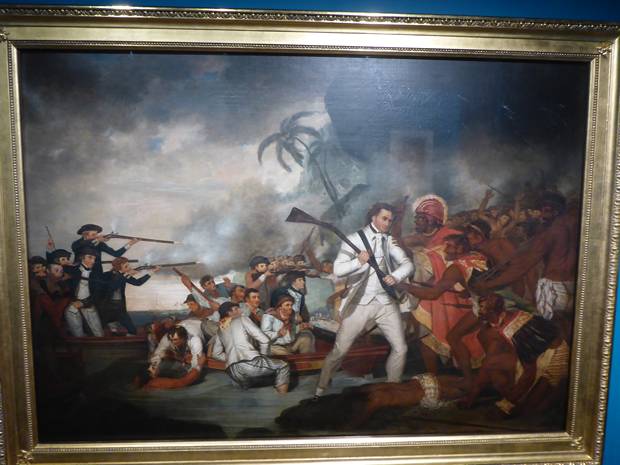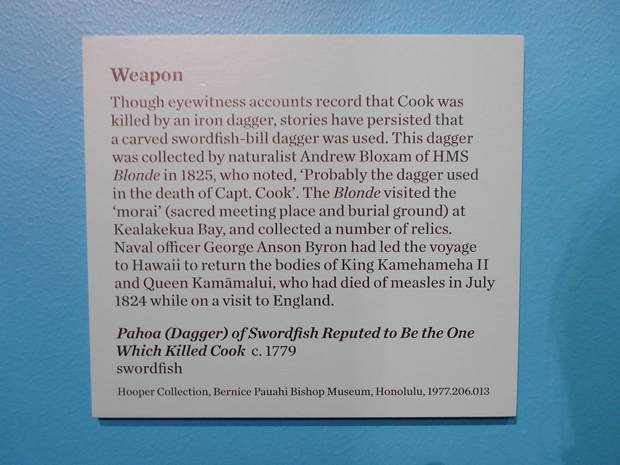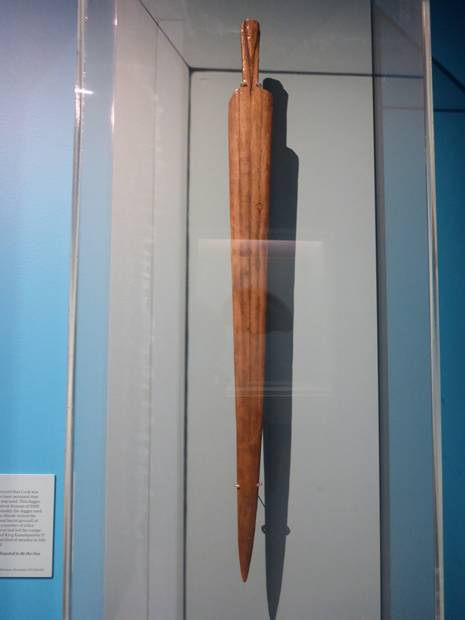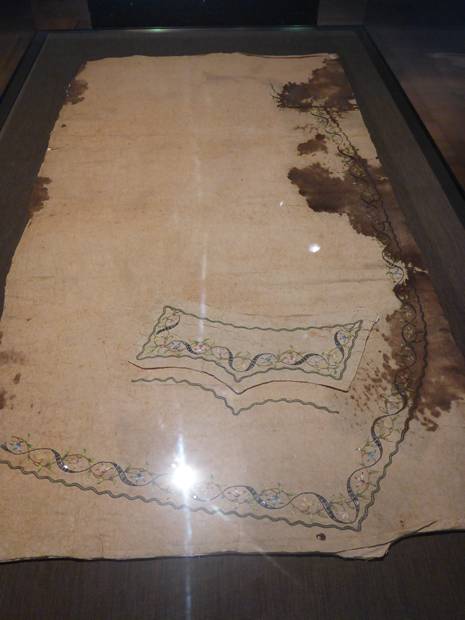Cook's Endeavours

|
Cook’s Endeavours We could hardly believe our good fortune when we arrived in Canberra to discover the Cook Exhibition at the National Library Building which was due to close a few days after we would be leaving. Years before my researches told me that one of Cook’s voyage journals of his three voyages was in the basement to the library and could be viewed once a month by appointment, so I didn’t hold out much hope for us being able to see it. However, as you can see the library was holding a major exhibition of original documents and artefacts from his voyages gathered not only from London but also from museums in Sydney and Melbourne. There was no objection to our photographing the exhibits and I had a field day, with only some of them shown here on the blog. What I have tried to do is convey the way Cook completed the charting of New Zealand and much of the east coast of Australia, by first showing the Dutch mapmaker, Joan Blaeu’s magnificent chart of 1659 which shows even a tiny part of Tasmania and ending with the General chart of Cook’s discoveries and routes of his three voyages, clearly showing one of his major discoveries that New Zealand comprised only two separate islands but curiously showing Tasmania joined to the Australian mainland. During the second of Lincolnshire born Matthew Flinders’ three voyages to Australia, which he re-named from New Holland, both he and George Bass in 1798 confirmed that Tasmania is an island, previously known as Van Diemen’s Land. It was a special experience to see Cook’s navigational equipment, some of which he adapted from the terrestrial use, like the hinged plane table frame designed to hold paper steady on a wooden base so maps could be drawn accurately using the 0 to 360’ markings on the face of the frame. I could imagine him with some of his officers having set up their instruments on a freshly discovered headland, using the wooden box of brass surveying instruments or with Charles Green, his astronomer in 1769 at Point Venus on Tahiti to record the transit of Venus and thus measure its distance from the earth with profound consequences for astronomy. Do you remember, we went on a little pilgrimage to that same spot while on our tour of Tahiti? I have also included the work of others around Cook at the time, the Master’s Log with its writing on the left and bold diagrams on the right and the exquisite painting of the Rainbow Lorikeet by Moses Griffith to show that Cook was surrounded by genius which he readily accepted and encouraged. This genius was not only on board Cook’s ship nor restricted to his time. He was fascinated to learn how the Marshallese islanders, for example, had their own sophisticated navigation methods which used no instruments. I liked the chart of the Pacific islands marked with little cowrie shells on tied bamboo sticks which they memorised rather than risked taking it to sea. We also use some of their methods by way of a diversion when we spot islands by the clouds forming above them long before we see land. But navigating by the wave patterns and ocean currents is an amazing skill attained by learning from ones elders and practice. This discovery of their knowledge proved that the historical movements of people from south-east Asia to the Pacific islands and New Zealand were intentional and well planned and not random mishaps as once thought. I wonder what Cook would think if he could see and was to know of the history of settlement and the conflict with the indigenous people that has brought us to the present day since he opened up the South Pacific. His death was part of this conflict, a culture clash between people who freely share most of their possessions for everyone’s enjoyment and a culture which values and claims ownership over theirs. We discovered for ourselves that the term ‘theft’ does not appear in the language of the Fijians for example but Cook’s temper had been exacerbated when the thefts comprised instruments the navigators needed for navigation and surveying. While this tragedy was unfolding and unbeknown to Elizabeth, his wife and mother of their six children, she was awaiting his return and embroidering the tapa (bark woven cloth) he took home from Tahiti, ready to make it into a court waistcoat for him to wear in King George III’s company. You can see the intricacy of her work reflects the affection she held for him. Doubly poignant for this devoted couple was that he died on Valentine’s Day, 240 years ago almost to the day. It was a moving and well laid out exhibition and we were so fortunate to be there at the time. We had heard that booking was essential but maybe they organisers over-estimated the level of interest they would get as there was no need for that on either of the two occasions we went. Another exhibition we were fortunate to see just before it closed was about Heath Ledger at the National Film and Sound Archive. Photography was not allowed but I can tell you he was not only a fine actor (famous for his part in Brokeback Mountain) but also a talented photographer, champion chess player and he thoroughly researched many of the acting parts he played. He was a live wire full with talent and skill and forever working hard. His family contributed many of the exhibits.
|
